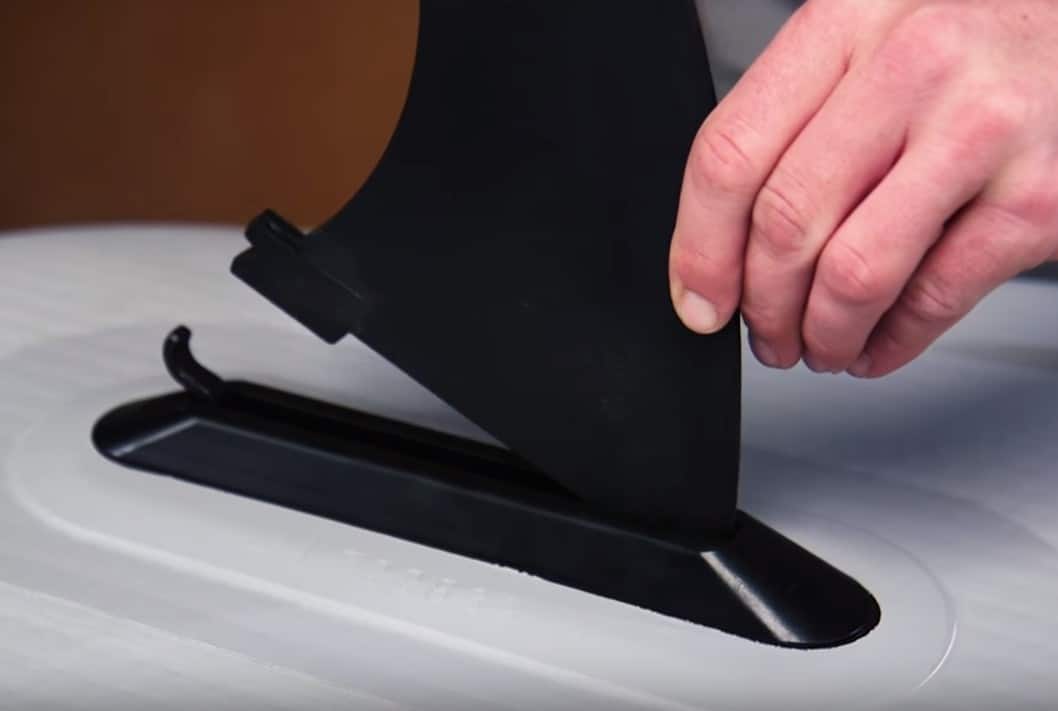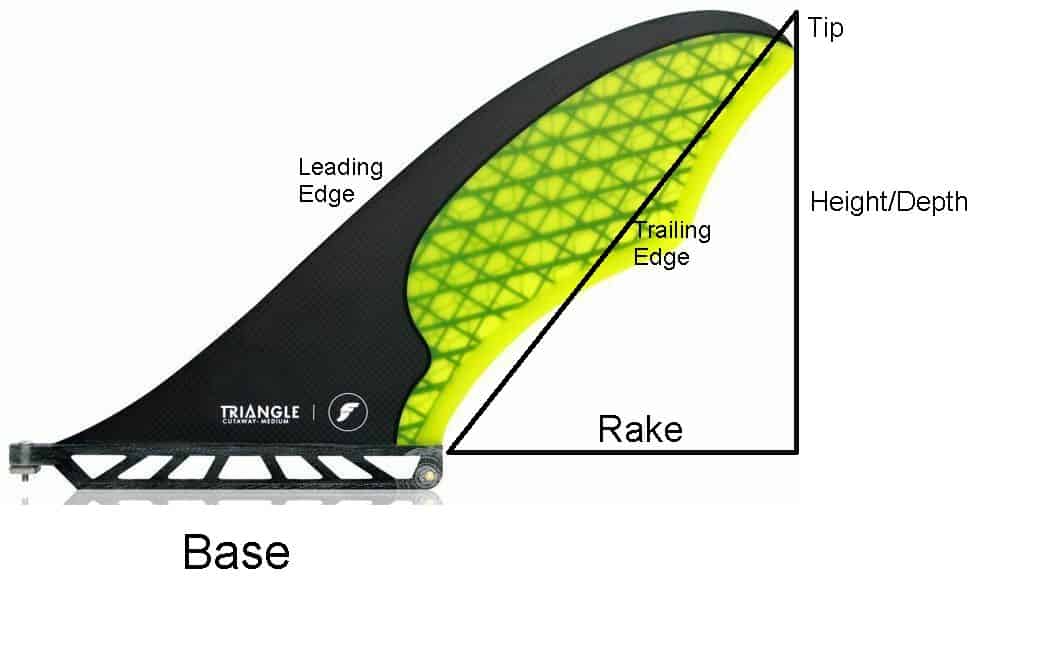SUP Fin Glossary of Terms
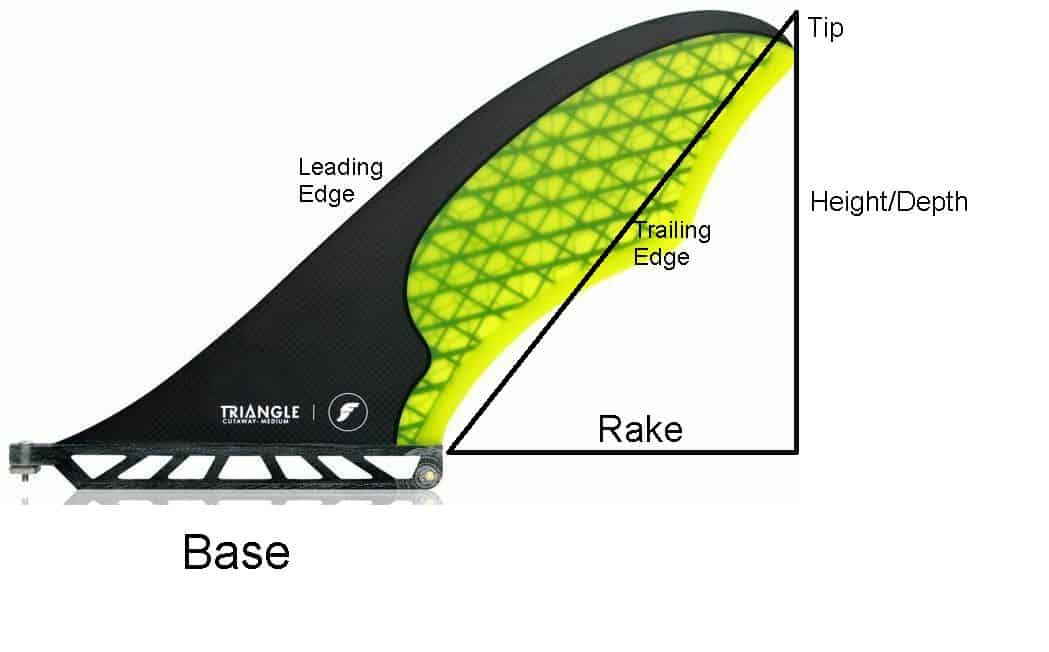
Base: The base is the part of the fin that attaches to the paddle board. The width of the base has a direct affect on paddle board tracking and stability.
Fin Box: The fin box is not part of the fin but part of the board where the fin is installed. The fin box is a slot and holds the fin in place in a variety of ways depending on the paddle board brand. Dig Deeper: Are Paddle Board Fins Universal?
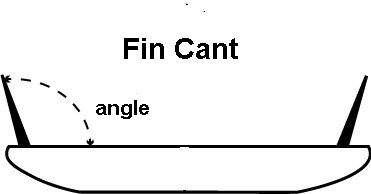
Cant: Fin cant is an outward angle of the fin relative to the bottom of the board. Fins that angle outward toward the rails of the paddle board have cant. If a fin points straight up it has no cant.
Cant creates drag. So fins with cant are slower going straight but pivot quicker with more drive. Fin cant is used on surfing paddle boards.
Center fin: Sometimes called a longboard fin. The center fin is located on the tail in the center of the board. A center fin is typically a large fin. A center fin can be used alone or with side fins.
Racing boards have only a center fin (no side fins). Touring typically have just a center fin but may have side fins. All-around paddle boards typically have a “2 plus 1” set up with one large center fin and two side fins.
Center fins by themselves work best for longer paddle boards. Center fins add a lot of stability and tracking to a paddle board.
Center fins can be used for surfing but many surfing paddle board have only small side fins. Dig Deeper: The 2 Basic SUP Fin Types
Drag: Drag reduces speed. The more overall fin size, the more rake, cant and foil the more drag a fin will create.
Drag is, of course, bad for racing, but some drag is beneficial for surfing allowing the fins to bite into the side of the wave.
Foil: The foil is the curved shape of a fin, like a plane wing. A rounded leading edge, fat middle and then a tapered smaller trailing edge.
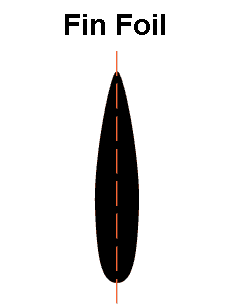
Flex: The flex or stiffness of a fin affect performance and durability. Stiff fins tend to be more stable but can be brittle when hitting a rocky bottom or reef. Flexible fins tend to make turning a little easier and are more durable than stiff fins.
Cheap fins do not have foil. Instead cheap fins have a sharp straight leading edge and straight sides.
Leading Edge: The leading edge is the front edge of the fin. Water encounters and moves over the leading edge of a fin first. The leading edge affects speed.
Moulded Fins: Moulded fins are small built-in (fixed) flexible fins on an inflatable paddle board. Typically they are side fins but sometimes come in a tri-fin or quad configuration.
Moulded fins are standard in whitewater paddle boards. Moulded fins in a tri-fin set up are used on the Red Paddle Co Ride. The Ride is one of the most popular and better all-around paddle boards on the market.
Rake: The rake (or sweep) is the angle of the leading edge. The rake affects speed. The greater the rake the less drag the fin creates. Plenty of rake will also keep the fin from catching on weeds.
Side fins: Side fins (or sidebites) are small fins near the rails of the board in front of the larger center fin.
Many paddle boards have side fins but many do not. Racing boards never have side fins.
Side fins aid in stability, tracking and handling. Side fins help tracking when paddling with stiff cross winds.
However, adding side fins to a board with a center fin does create more drag when flatwater paddling
Side fins are great for paddle surfing. They channel water and create more drive for bottom turns. And side fins help the rails dig into the wave better.
Tip: The tip is opposite the base and the farthest away from the paddle board. The tip is the part of the paddle board that sits deepest in the water. The tip affects tracking and stability.
Toe: Toe is the angle of the side fins in relation to the center line of the paddle board. Most common is toe-in.
Toe-in: is when the side fins angle in toward the nose of the board. Toe-in increases grip but creates drag. It’s most common in surfing paddle boards
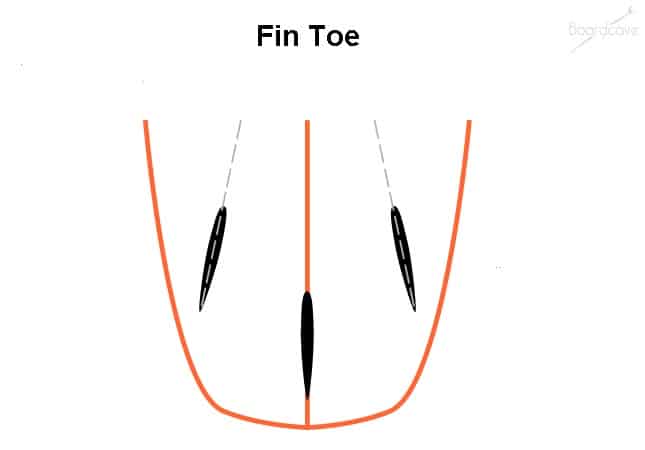
Trailing Edge: The trailing edge is the back edge of the fin. The trailing edge affects how water is released from the fin. It affects turning and speed.
Tracking: Tracking is how well a paddle board moves in straight line. Fins are the primary reason a paddle board can “track a straight line.” Without fins a board would spin in circles. Read: Best sup fin for tracking
Tri-fin: Tri-fin is any fin arrangement using three fins. The “2 plus 1” and thruster fin setups are tri-fin arrangements.
2 plus 1: 2 plus 1 is a common tri-fin arrangement with two small side fins in front of a larger center fin.
Thruster: Thruster is a tri-fin arrangement like the 2 plus 1 with a slight difference. Instead of a large center fin all three fins are the same size.
Quad: Quad is a fin arrangement with four small side fins. Two fins on each side near the tail of the board. Quads are typically surfing paddle boards.
